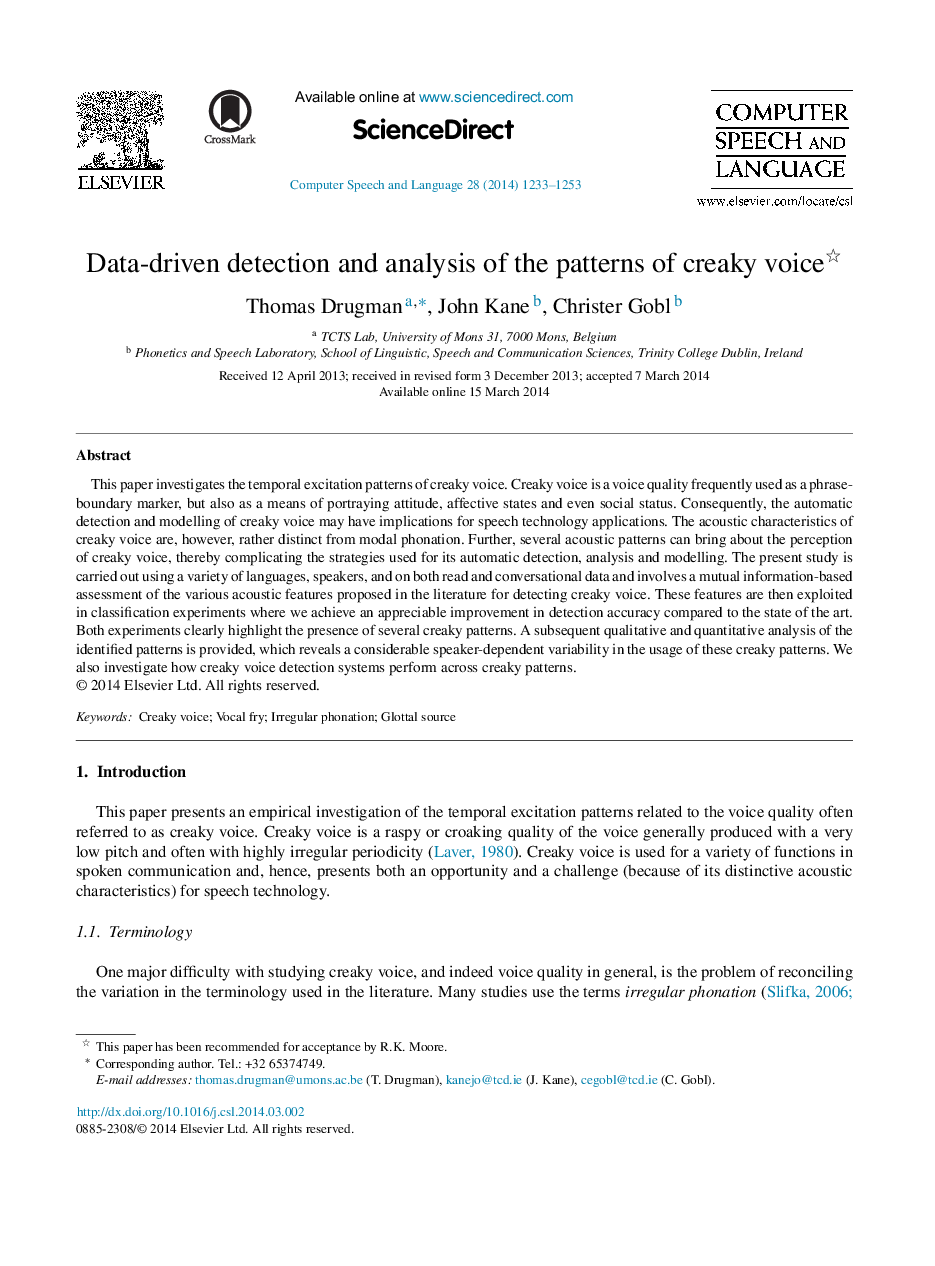| Article ID | Journal | Published Year | Pages | File Type |
|---|---|---|---|---|
| 558282 | Computer Speech & Language | 2014 | 21 Pages |
•Analysis of a large volume of read and conversational speech data.•Mutual-information based assessment of the features for creaky voice detection.•Classification experiments showing clear improvement in performance over the state-of-the-art.•Illustration of three main excitation patterns for creaky voice.
This paper investigates the temporal excitation patterns of creaky voice. Creaky voice is a voice quality frequently used as a phrase-boundary marker, but also as a means of portraying attitude, affective states and even social status. Consequently, the automatic detection and modelling of creaky voice may have implications for speech technology applications. The acoustic characteristics of creaky voice are, however, rather distinct from modal phonation. Further, several acoustic patterns can bring about the perception of creaky voice, thereby complicating the strategies used for its automatic detection, analysis and modelling. The present study is carried out using a variety of languages, speakers, and on both read and conversational data and involves a mutual information-based assessment of the various acoustic features proposed in the literature for detecting creaky voice. These features are then exploited in classification experiments where we achieve an appreciable improvement in detection accuracy compared to the state of the art. Both experiments clearly highlight the presence of several creaky patterns. A subsequent qualitative and quantitative analysis of the identified patterns is provided, which reveals a considerable speaker-dependent variability in the usage of these creaky patterns. We also investigate how creaky voice detection systems perform across creaky patterns.
